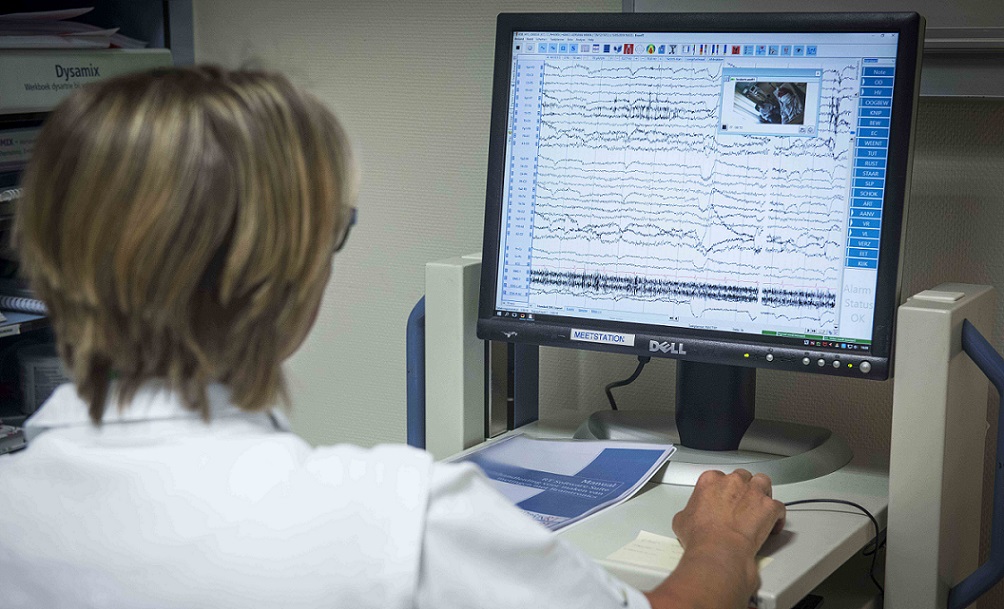Admission to the Stroke Unit
Continuous monitoring
Once the primary care has been provided in the Accident & Emergency department, stroke patients are hospitalised in the Stroke Unit. This unit provides optimal support for patients in the first few days after a stroke. Continuous monitoring is carried out by a multidisciplinary stroke team, paying particular attention among other things to:
- Cardiac rhythm
- Blood pressure
- Temperature
- Oxygen level in the blood
- Consciousness
- Neurological failure, such as symptoms of paralysis, sensitivity problems and sight
- Swallowing problems
- Problems with speaking
- Bladder function
Read more under the photo.

Preventing or detecting complications
If problems occur, these are remedied as quickly as possible. For example, if the oxygen level in the blood is too low, extra oxygen is administered. The supervision in the first few days is extremely important to limit the damage to the brain cells. In addition, the stroke team endeavours to prevent complications or detect them early on. The following complications occur frequently:
- Pneumonia
- Obstipation
- Overfilling of the bladder
- Another stroke
- Pain
- Thrombosis (clot) in the lower leg
- Pressure sores
Transfer to the Neurology department
Stroke patients usually only stay in the Stroke Unit for a few days. When the medical situation permits, after your stay in the Stroke Unit you are transferred to an ordinary hospital room in the Neurology department.
